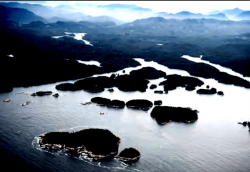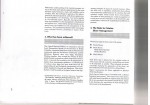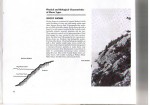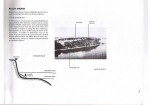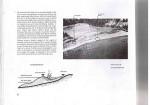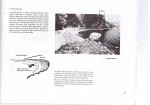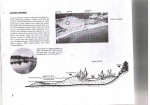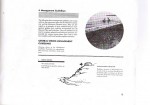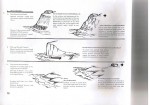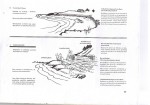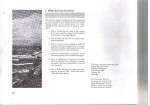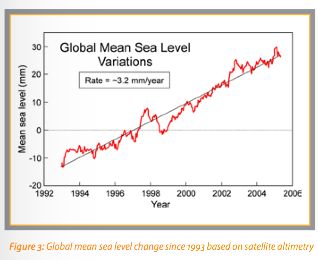OXYGEN DEPLETION: A harmful algal bloom of the dinoflagellates Noctiluca scintillans, known as a red tide Organic materials, from such sources as algal blooms and discharges from domestic wastewater treatment plants and food-processing operations, are decomposed by oxygen-consuming microbes in waterbodies. This pollution is typically measured as the biochemical oxygen demand (BOD). High BOD levels can cause oxygen depletion, jeopardizing fish and other aquatic species. Lake Erie’s oxygen- depleted bottom zone, for example, has expanded since 1998, with negative environmental impacts. Some coastal areas also undergo oxygen depletion, including the eastern and southern coasts of North America, southern coasts of China and Japan, and large areas around Europe (WWAP 2006).
- From: Research Document – 2012/072
By J.R. Irvine and W.R. Crawford
Scientists have reported alarmingly low oxygen concentrations in near-shore waters of the Oregon coast in summer, being in 2002 and most severely in 2006. High crab mortalities on the ocean bottom took place in these summers. Low oxygen concentrations (less than 1 ml/L) have also been observed on off southwest Vancouver Island since 2002, with concentrations of 0.7 ml/L at 150 metres depth recorded in 2006 and 2009, the lowest in the 50-year record. Concentration was 1.0 and 1.1 ml/L in 2010 and 2011, respectively. Hypoxia on the Canadian shelf is much less severe than off Oregon and Washington, and mortality of bottom life has not been reported.
-
From swissinfo.ch : Oceans could run out of oxygen
by Isobel Leybold-Johnson, swissinfo.ch
Feb 11, 2012 – 14:03
Global warming could lead to more of the world’s oceans becoming “dead zones” – where a lack of oxygen leads to marine life dying out.
This was the conclusion of recent analysis of marine oxygen conditions over the past 20,000 years, co-authored by the Federal Institute of Technology Zurich (ETHZ).
Oceans are already oxygen-starved in places: every summer some areas of the northeastern Pacific see huge numbers of dead fish, shrimp or molluscs washed up on beaches.
This is caused by marine animals suffocating because the water contains too little of the vital O2 they need to breathe – or none at all. It is not only an ecological problem, the local fishing industry is affected as well.
Currently around 15 per cent of oceans are considered oxygen-depleted or anoxic “dead zones”.
“There’s been a very longstanding debate about the influence of global warming on the concentration of oxygen in the ocean, basically because the ocean oxygen concentration measurements of the past decades have not been very conclusive,” Samuel Jaccard from the ETHZ’s Geological Institute told swissinfo.ch.
This is why Jaccard and Eric Galbraith from McGill University in Canada decided to go back in time and reconstruct how the oxygen content has changed in oceans in the past 20,000 years, with the focus on the Pacific and Indian Oceans.
Temperature rise
Their study, published in Nature Geoscience, showed that the average global temperature rise of around at least two degrees Celsius between the peak and the end of the last Ice Age (between about 10,000-20,000 years ago) had a massive effect on the oxygen content of seawater.
“The warmer the global average temperature, the more extended the oxygen minimum zones are, so the volume of these oxygen-poor water bodies is more extended during warm periods than in cold periods,” Jaccard said.
What is worrying is that, currently, global average temperature is predicted to rise by at least two degrees in the coming century due to climate change. This is of a similar magnitude to the warming the planet has undergone since the last Ice Age 20,000 years ago.
“So we would assume that if, indeed, temperatures are increasing in the next 100 years, these oxygen minimum zones would also increase in volume and that the general oxygen concentration of the ocean will decrease,” Jaccard said.
And what is more: “our analysis has shown that not only was absolute temperature important, but also the rate of change, so the faster the warming, the more expanded these zones are”.
Oxygen in seawater mainly comes from gas exchange between the water’s surface and the atmosphere. As temperatures at the surface increase, the dissolved oxygen supply below the surface gets used up more quickly. It’s a little like turning down the oxygen pump in a fish tank, says Jaccard.
Suffering oceans
Dead zones are a topic well known to green campaigners and are not just limited to the biodiversity-rich deep oceans, explains Jochen Lamp, a marine expert at WWF in Germany.
They also affect the shallow seas like the Baltic Sea, which are subject to eutrophication: when nutrients from the land and agriculture cause over-enrichment of the water and the growth of algal blooms. These blooms then deplete the water’s oxygen.
But whereas it is easier to tackle shallow seas dead zones by controlling nutrient input, such as by having low nutrient agriculture, climate change adaptation is “a much more long lasting and complicated process”, said Lamp.
Even if countries such as Switzerland can agree on measures – the Rio+20 conference on sustainable development is scheduled for June – the change in the trend may not be seen for 50-70 years, he added.
Overall the world’s oceans are suffering: there is also overfishing and the other effects of climate change like the acidification of the waters.
Oceans are a delicately balanced ecosystem. “We hope that the balance will re-establish, but there is a lot of human impact in this imbalance and we do not yet know what will happen in reality during the next decades,” warned Lamp.
Isobel Leybold-Johnson, swissinfo.ch
Jaccard SL & Galbraith ED. Large climate-driven changes of oceanic oxygen concentrations during the last deglaciation.
The article was published online in Nature Geoscience on December 18, 2011. The research was highlighted in the ETH Life journal in January 2012.
Deep water in the North Pacific Ocean already has the most acidic water in the global ocean and the British Columbia continental shelf might see negative impacts of this feature sooner than most oceanic waters.
Oxygen depletion in the Gulf of Mexico has created a huge ‘dead zone,’ with major negative impacts on biodiversity and fisheries (MA 2005) (see Chapter 6).
4.4 Ocean Pollutants
Return to Index


